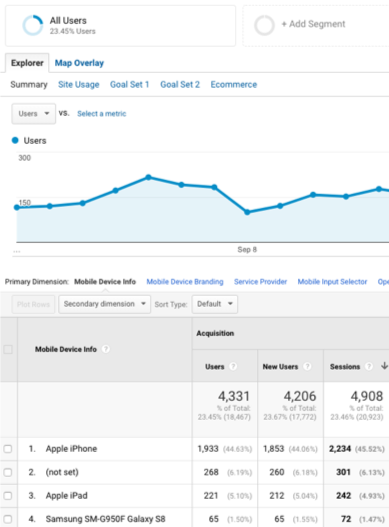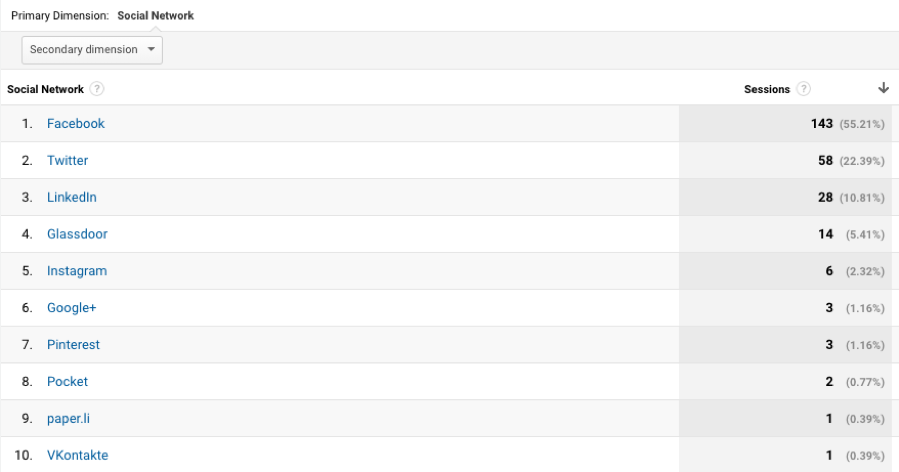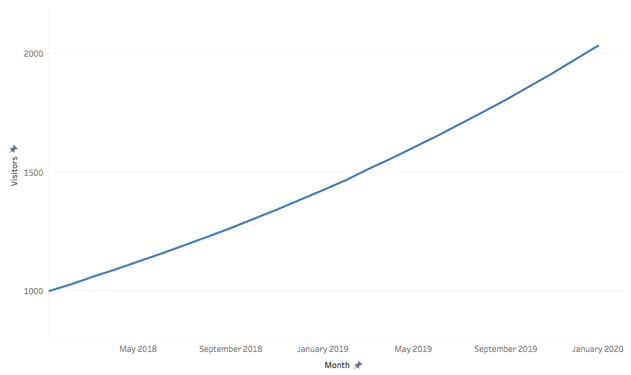Google Analytics 101 : cinq outils d'analyse pour les relations publiques

Articles suggérés
Sur des sujets similaires
En tant que professionnel des relations publiques, vous êtes sans doute familier avec les différentes unités de mesure permettant d'évaluer l'impact de votre travail. Nous affirmons que les relations publiques permettent de créer de nouvelles audiences, de capter l'attention des clients potentiels, de bâtir un lien de confiance avec une marque, et de transformer ce lien en une relation durable qui se traduira ultimement en revenus pour les clients. L'un des meilleurs outils pour mesurer ce que vous générez réellement est Google Analytics.
Google Analytics propose une panoplie de rapports d'analyse vous aidant à comprendre comment les audiences interagissent avec vos propriétés numériques, de votre site Web aux plateformes sociales, en passant par les applications mobiles. Nick Patterson, analyste marketing chez notre compagnie soeur SHIFT Communications, présente cinq outils de mesure intégrés à Google Analytics qui vous permettront facilement d'évaluer l'impact de votre travail. (L'article est en anglais).
———
As a public relations professional, you’re probably familiar (or should be) with the different types of metrics that demonstrate the success of your work. We like to say that PR is responsible for creating new audiences, getting people’s attention for their clients, building trust in the brand, and transforming awareness and trust into new relationships that mean business and revenue down the line. One of the best tools for starting to understand the awareness and trust you’re creating is Google Analytics.
Google Analytics has a lot of built-in, “out of the box” metrics that help with a surface level understanding of how your audience interacts with your digital properties, from your website to social media accounts to mobile apps. Let’s look at our take on Google Analytics 101 with 5 built-in metrics that need no customization and what they mean for your PR work.
New Users

New Users (formerly known as New Unique Visitors) is the number of people who have never visited your website before and are stopping by for the first time. While a lot of things can contribute to new visitors, it’s an important first place to look. If new visitors aren’t increasing over time, then ultimately your website is in trouble. When you get great hits, you can often see spikes in your website’s new visitors, as the blue line above shows.
Obviously, unique new users can come from many different sources, including organic search, paid advertising, and public relations. However, if your unique new users rate isn’t growing, you know you’ve got to step up your PR game to get more awareness of your brand.
Where to find it: Left menu, Audience, Overview. Then from the submenu just below Audience Overview, click + Add Segment and select the New Users segment.
Returning Users
Think only new visitors are important? Think again. It’s rare that a sale/conversion will be made on the first visit. More often than not, you have to build trust with your audience, a core function of public relations work. The more earned media you get, the more trust your audience should develop in your brand.
This is also why content marketing is so popular among PR and marketing professionals. If you create content, you’re creating a gift of valuable information for your visitors to read/share. It’s a signal to your audience that if they return they’re likely to find something of interest to them to assist them in making a decision or solving a problem.
Returning Users is a proxy for trust that you’ll keep that promise. It’s actually more important than new users, because if you don’t keep the ones you have, you’ll forever be spending more and more money and time to replace them. Awareness creates the relationship, but trust strengthens it.
Where to find it: Left menu, Audience, Overview. Then from the submenu just below Audience Overview, click + Add Segment and select the Returning Users segment.
Mobile Users
Great strategies consider all aspects of a digital program, including a mobile strategy for those who will visit via tablet or a smartphone. With the share of Americans that own smartphones now up to 77%, any strategy that doesn’t include mobile is dangerously irrelevant today.

As you do your public relations work, think about all of the different ways your content is being consumed. The best place to look is in mobile traffic and mobile devices inside Google Analytics. How are people perceiving you? What devices should you check out your digital properties on? Should your PR campaign include a mobile app of its own, or at the very least a responsive design for your website?
In the example above, we see that mobile traffic is about 23% of all website traffic and the vast majority of mobile users are using Apple iOS devices. That tells us that whatever we do, we had better make sure it works on iPhones and iPads, from where we host videos to what social networks have great iOS mobile apps. For example, if we got a great piece of video coverage that was hosted on a news site that used a Flash Player, we’d want to re-render that or load the clip to YouTube to make sure our Apple mobile users could see it.
Where to find it: Left menu, Audience, Mobile, Devices or Overview, depending on what you want to see.
Social Network Referrals
Social media and PR go together like peanut butter and jelly. The moment someone shares any piece of your content, it becomes earned media. That’s why measuring social media traffic to your digital properties is an important first step in understanding how well your PR is working. If no one is aware of you, if no one trusts you, no one will share your stuff or visit your website.

Social Network Referrals in Google Analytics is a great place to see which networks are working for you right now. Are you spending most of your time promoting your posts on Facebook, but LinkedIn is delivering the new audience? Are you tweeting maniacally but no one’s visiting? Look in Social Network Referrals to see if your audience numbers match your efforts.
Where to find it: Left menu, Acquisition, Social, Network Referrals.
Goal Completions
At the end of the day, people need to do something of value for your business to ultimately judge whether your PR and marketing are working.

Goal Completions tells you if there’s a mismatch between your PR and your marketing – if you’re getting great results from the metrics above, but no one’s converting, then you’re promising something in your PR and audience generation efforts that your visitors aren’t getting once they visit your digital properties. A great story about your brand’s mission, for example, might send people to a website that doesn’t reflect your mission or focus at all.
Did people do what you wanted them to do? If not, perhaps you need to retune your public relations messaging, creative, or content so that they have a more clear purpose when they get to your digital properties.
Where to find it: Left menu, Conversions, Goals, Overview.
Final Thoughts
One of the most common questions we’re always asked at SHIFT is what the industry standard or average is, what good numbers look like, etc. There aren’t any that are credible. Rather, always be looking for increasing growth in the metrics that matter to you. The plan isn’t to “beat competitors” since you can’t see their analytics. Instead, work to improve your numbers every month and beat yourself.

If you can improve new visitors, returning visitors, and goal conversions by a very modest 3% month over month, in less than two years your audience will have doubled. As audience is at the top of the funnel, those new audiences will flow into leads, opportunities, conversions, and revenue. I can’t think of a single company that wouldn’t want to double its revenue in two years or less, can you?
This article was initially published by our sister company SHIFT Communications on The SHIFT blog.
——— Nicholas Patterson était analyste marketing SHIFT Communications, société sœur du Cabinet de relations publiques NATIONAL



